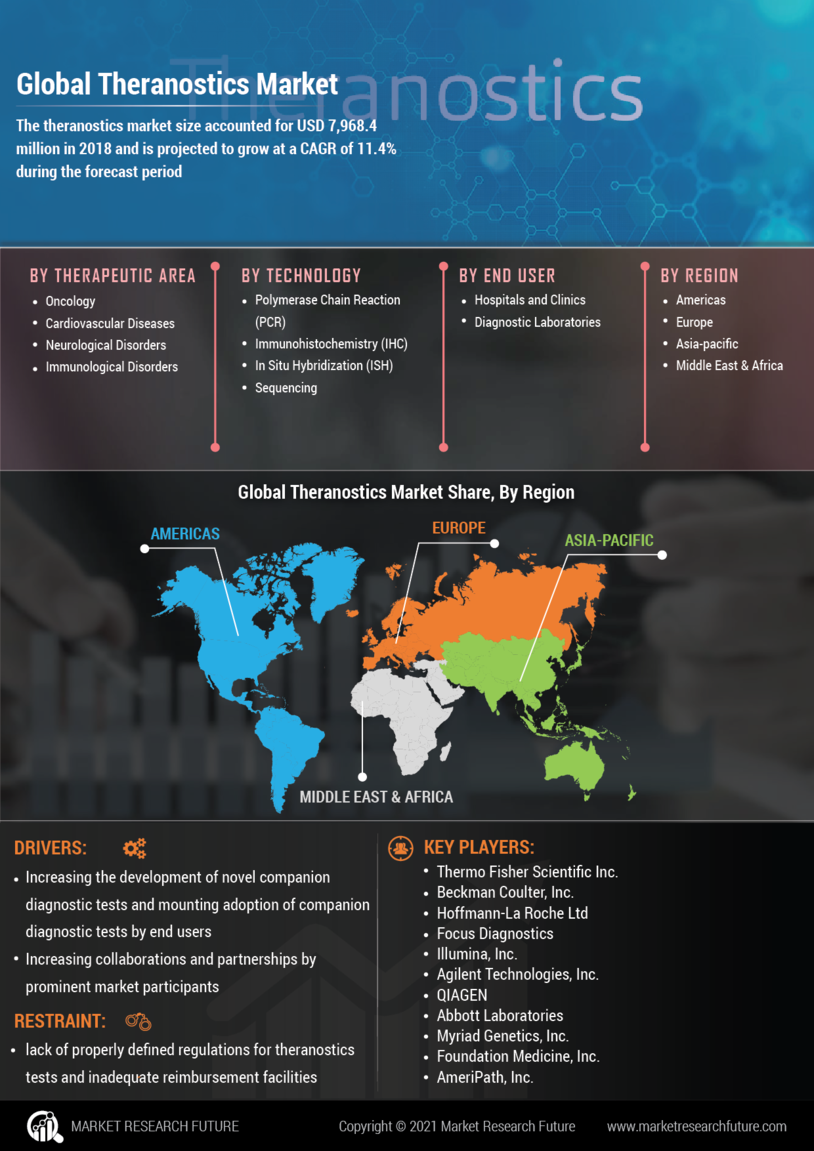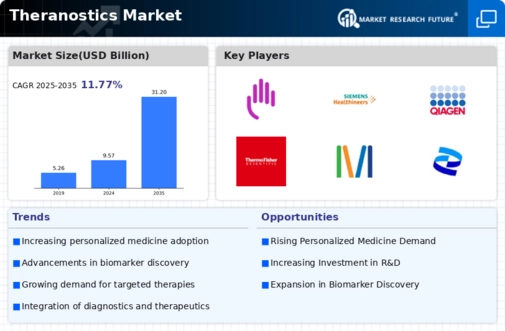Market Growth Projections
The Global Theranostics Market Industry is poised for substantial growth, with projections indicating a rise from 9.57 USD Billion in 2024 to 31.2 USD Billion by 2035. This growth trajectory suggests a compound annual growth rate of 11.34% from 2025 to 2035, highlighting the increasing adoption of theranostic approaches in clinical practice. Factors contributing to this growth include advancements in technology, rising demand for personalized medicine, and an increasing prevalence of chronic diseases. The market's expansion reflects a broader trend towards integrated healthcare solutions that combine diagnostics and therapeutics, ultimately aiming to improve patient outcomes and optimize treatment efficacy.
Supportive Regulatory Framework
A supportive regulatory framework is fostering growth within the Global Theranostics Market Industry. Regulatory bodies are increasingly recognizing the importance of theranostic approaches, leading to streamlined approval processes for new diagnostic and therapeutic agents. This regulatory support encourages innovation and investment in the development of novel theranostic products. For example, the FDA has established guidelines that facilitate the co-development of diagnostics and therapeutics, which is essential for the success of theranostic strategies. As a result, the market is likely to benefit from an influx of new products and technologies, further driving its expansion in the coming years.
Rising Demand for Personalized Medicine
The Global Theranostics Market Industry is experiencing a notable surge in demand for personalized medicine, which tailors treatment based on individual patient profiles. This shift is largely driven by advancements in genomic and molecular profiling technologies, enabling healthcare providers to identify specific biomarkers associated with diseases. As a result, therapies can be customized, enhancing efficacy and minimizing adverse effects. The market is projected to reach 9.57 USD Billion in 2024, reflecting the growing inclination towards precision medicine. This trend not only improves patient outcomes but also aligns with the broader healthcare paradigm shift towards individualized treatment strategies.
Increasing Incidence of Chronic Diseases
The Global Theranostics Market Industry is significantly impacted by the rising incidence of chronic diseases, including cancer, cardiovascular disorders, and diabetes. As these conditions become more prevalent globally, there is an urgent need for effective diagnostic and therapeutic solutions. Theranostics Market offers a dual approach by providing precise diagnostics alongside targeted therapies, which is particularly beneficial in managing chronic diseases. The market's projected compound annual growth rate of 11.34% from 2025 to 2035 reflects the increasing demand for integrated treatment solutions. This trend indicates a shift towards more comprehensive healthcare strategies that address both diagnosis and treatment in a cohesive manner.
Growing Investment in Research and Development
Investment in research and development is a critical driver of the Global Theranostics Market Industry. Pharmaceutical and biotechnology companies are increasingly allocating resources towards the discovery of new theranostic agents, recognizing the potential for improved patient outcomes and market growth. Collaborative efforts between academia and industry are also on the rise, leading to innovative solutions that bridge the gap between diagnostics and therapeutics. This trend is expected to contribute to the market's growth trajectory, with projections indicating a rise to 31.2 USD Billion by 2035. The emphasis on R&D not only enhances the therapeutic landscape but also positions companies competitively in a rapidly evolving market.
Technological Advancements in Diagnostic Tools
Technological innovations in diagnostic tools are significantly influencing the Global Theranostics Market Industry. The integration of artificial intelligence and machine learning in diagnostic processes enhances the accuracy and speed of disease detection. For instance, advanced imaging techniques and molecular diagnostics are now capable of identifying diseases at earlier stages, which is crucial for effective treatment. The anticipated growth of the market to 31.2 USD Billion by 2035 underscores the impact of these technological advancements. Furthermore, the continuous evolution of diagnostic technologies is likely to facilitate the development of new theranostic agents, thereby expanding treatment options for patients.

















Leave a Comment